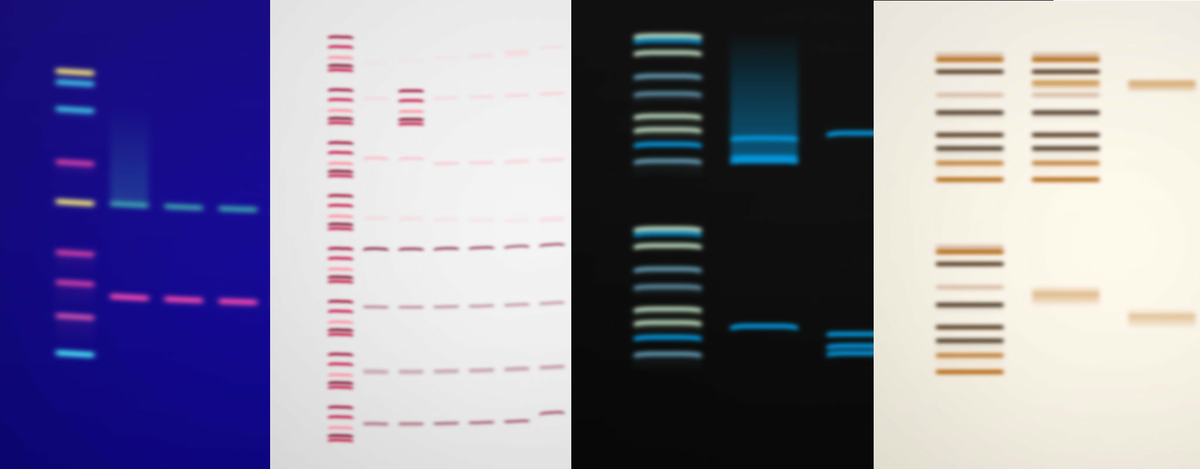
Bytes and Blots
written by boringold.tez
Gels by Shawn Douglas and Jason Brown delves into the connections between scientific exploration and artistic interpretation. At the same time, it is a throwback to my personal past and brings back warm memories of when I was young(er).
Ever since I learned about the double helix structure of deoxyribonucleic acid (DNA) in biology class, I was fascinated by the complexity of its form and the elegant simplicity of its mechanism.
Later, when studying medicine, Watson and Crick's influential Nature article from 1953 became a print on my wall as a symbol of a pivotal moment in our understanding of the building blocks of life.
The revelation that life constantly replicates itself from a tiny biochemical molecule, governed by a code of four amino acids, felt like an epiphany.
During my biochemistry seminars at university, I immersed myself in the tangible process of gel electrophoresis. It fascinated me how this hands–on technique could visualize intricate sequences of tiny molecules.
Fast forward two decades, and I discovered the captivating world of generative art. Once again, I witnessed a process that transformed abstract, complex code into visually stunning outputs. I was enthralled (and have been ever since).
Gels by Shawn Douglas and Jason Brown beautifully intertwines my fascinations for both science and art. The project creates simulated images of gel electrophoresis results, including inaccuracies and artifacts. A video linked by the artists explains both the artwork and the scientific process it visualizes.
This project not only evokes nostalgia for my past but also employs the principles of computer code as a compelling analogy to the intricate tapestry of life itself. In displaying fragments of SARS-CoV-2 DNA and early Corona vaccine mRNA, Gels pays homage to the achievements of scientists and the role of science in navigating the challenges of the Covid pandemic.
In putting the images at the end of its creative process, Gels challenges the conventional hierarchy between visual arts and science, where images often serve as supporting illustrations or as data points collected during the process, only to be turned into hard data, numbers, and formulas. It celebrates the image as an outcome, a visual manifestation of the scientific exploration and the intricate wonders it reveals, and acts as a bridge between art and science.
Gels shows how both disciplines explore, interpret, and communicate the wonders of our existence and take us on vibrant journeys of discovery that can reshape our understanding of ourselves and the world we inhabit.